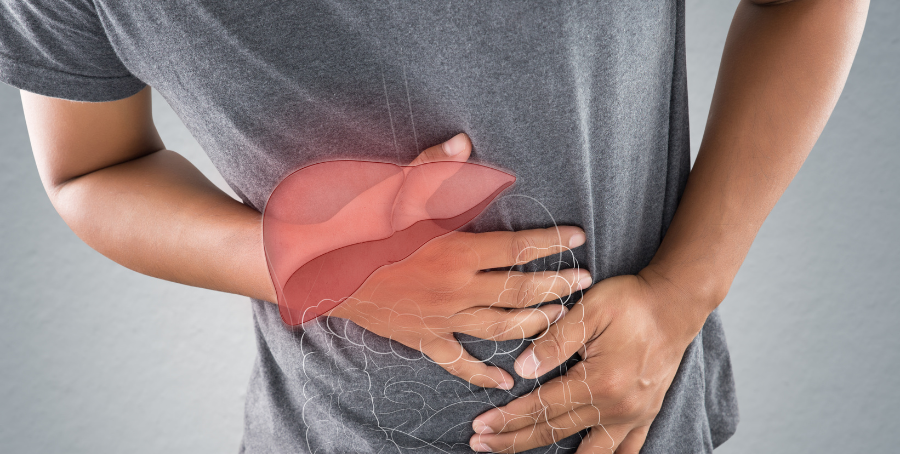Liver Diseases
The liver performs numerous crucial functions in the body such as regulating metabolism, storing vitamins and iron, creating bile, and removing toxins. Inadequate liver function can cause serious problems and even death.

What are the most common liver conditions?
Fatty Liver
Fatty liver disease is a condition when the build-up of fat in the liver reaches 5-10% of the liver’s weight.
Jaundice
Jaundice is the yellow discoloration of tissues due to excessive accumulation of bilirubin. It is not a disease but a symptom of underlying liver conditions.
Hepatitis (A, B, C)
Hepatitis refers to swelling of the liver tissue which may be caused by viral infections, toxins, drug abuses, certain medications or disorder of the immune system. The most common types are A, B, and C. Hepatitis infections may be acute or chronic, and can lead to liver failure and death in severe cases. A combination of test and ultrasound is used to detect any damage to liver and certain hepatitis infection. There are antiviral medications available to eliminate the virus
Liver Cirrhosis
Liver cirrhosis refers to irreversible scarring to the liver over an extended period of time. It is caused by chronic (long-term) damage to the liver from various causes, leading to the forming of scarred tissues on the liver.
Liver Cysts
Liver cysts are sacs filled with fluid that are often non-cancerous and rarely grow big enough to cause noticeable symptoms but may result in pain in the abdomen.
Liver Cancer
Liver cancer occurs when abnormal growth of tissue develop in the liver. In Singapore, liver cancer is the fourth most common cancer in men. If liver cancer is affecting solely one part of the liver, surgery is the best treatment. However, if it affects both lobes of the liver, chemotherapy may be the only option.
What are the risk factors for liver diseases?
Fatty liver
- Obesity
- High-fat diet
- High alcohol intake
- Diabetes
Jaundice
- Haemolysis
- Acute and chronic hepatitis
- Drug-induced liver damage
Hepatitis (A, B, C)
- Unsafe drinking water and food
- Sharing of needles
- Poor hygiene
- Having autoimmune disorder
Liver Cirrhosis
- Chronic alcohol intake
- Chronic hepatitis (B, C, D)
- Fat accumulation in the liver
- Cystic fibrosis
- Iron build up in the body
- Other rare inherited liver diseases
How are liver diseases diagnosed?
- Physical examination
- Blood tests
- Biopsy
- Ultrasound of the liver and abdomen
- Endoscopy of the stomach or bile ducts (ERCP)
- CT scan
- MRI
What are the most common signs of liver diseases?
As the liver becomes more severely damaged, more obvious and serious symptoms can develop, such as yellowing of the skin and whites of the eyes (jaundice) swelling in the legs, ankles and feet caused by a build-up of fluid (edema) swelling in your abdomen, legs and feet.
How are liver diseases treated?
This will depend on the causes of the liver diseases.
Fatty Liver
For patients with fatty livers, they are required to lose weight through healthier diet and exercises along with treating underlying conditions such as diabetes and high cholesterol.
Hepatitis (A,B,C)
Hepatitis is generally a self-limiting condition with symptoms lasting for several weeks or months before the patient recovers completely and develop lifelong immunity to the virus. However some patients may not be able to get rid of the virus completely in their body and would need regular tests or ultrasound scanning to detect and assess the liver damage. Anti-viral medications are commonly prescribed by doctors to stop virus replicating itself and do further prevent further damage to patient’s liver.
Liver Cirrhosis
When cirrhosis progresses, a common complication is the accumulation of fluid (edema) in the abdomen or lower lymphs, causing swelling in the legs, feet and tummy; the main treatment is to take diuretic medicine to reduce fluid from the body or to conduct a drainage of fluid out of from your body.
Liver Cancer
If liver cancer only affects one part of the liver, open or laparoscopic (key-hole) surgery to remove the part of the liver with cancer is recommended. For patients with cancer found on both liver lobes, localised chemotherapy are done to eliminate cancer cells and stop them from replicating . In cases underlying liver disease is advanced, an advanced liver transplant may be recommended.
How can I do to prevent liver diseases?
- Limit alcohol intake
- Avoid unnecessary risks like unprotected sex, unhygienic tattoos and piercings, sharing injection needles
- Use medications only in recommended doses when necessary
- Maintain a healthy body weight
- Avoid toxic chemicals
How can I do to prevent liver diseases?
The Centre for Screening and Surgery (CSS) specialises in the screening and detection of cancer in its early stages. A high-resolution ultrasound machine is used to diagnose liver, thyroid nodules, gallstones, breast, lumps and bumps on the skin or hernias. Results of the ultrasound scan will be available on the same day of the scan.
CSS is led by Dr Kum Cheng Kiong, a pioneer in Asia for Minimally Invasive Surgery (Laparoscopic Surgery or Keyhole Surgery) with more than 30 years of experience. He is the former President of the Singapore chapter of the Endoscopic and Laparoscopic Surgeons of Asia (ELSA) and the founding member of the Endoscopic and Laparoscopic Surgeons of Asia.
